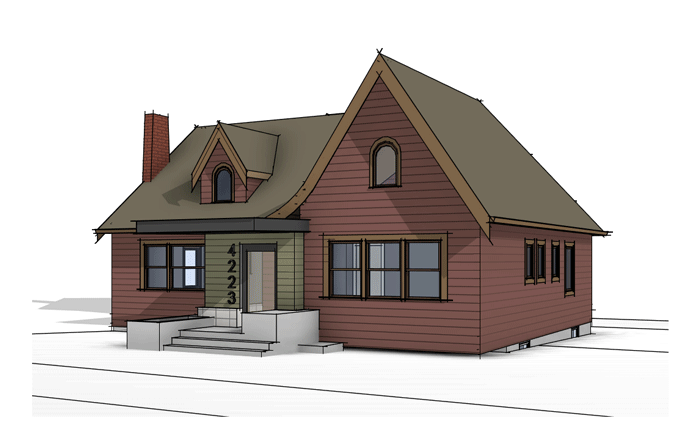The GOP passed a bill that changes the Deadlines for tax credits on energy efficiency upgrades.
It is important to note these if you are in or will soon be in a project that could take advantage of them! There is still time to use some of these credits but you will have to move fast. Here are the details and resources to get you started.
EV tax credits ended in September of this year (2025). Energy efficient home deadlines are ending at the end of the year (Dec 2025). Energy credits such as solar panels and batteries end next summer (June 2026). Please consult a tax professional to be sure you qualify.
Here is the breakdown:
Energy Efficient Homes and Energy Tax Credits
25C Energy efficient home improvement credit -The cutoff is Dec 2025
Applicable in homes built after 2005.
There is a $12,000 cap for most categories.
This credit covers 30% of qualifying upgrade costs, up to the following limits
$600 limit for for exterior windows and skylights
600 limit for Energy property
Home Energy Audits can get you up to a $150 tax break
The upgrades this applies to include
Building Envelope
Insulation
Air sealing
windows
doors ($250 per door, with a $500 cap)
skylights
HVAC $2,000 (the $1,200 limit may be exceeded for this category)
heat pumps
heat pump water heaters
An electric or natural gas heat pump water heater
An electric or natural gas heat pump
A central air conditioner
A natural gas, propane or oil water heater water heater
Electrical panel upgrades (when installed with a heat pump or HPWH)
panelboards
sub-panelboard
branch circuits
feeders
An ID number must be created by the manufacturer and reported during your tax filing.
25D Residential clean energy credit -The Cutoff is Dec 31 2025
The credit is worth 30% of the cost to install qualifying systems that use solar, wind, geothermal, biomass, or fuel cell power to produce electricity, heat water, or regulate the temperature in your home.
Solar electric property expenditures
solar water heating property expenditures
fuel cell property expenditures
small wind energy property expenditures
geothermal heat pump property expenditures
and battery storage technology expenditure
Maximum payout for any taxable year shall not exceed $500 with respect to each half kilowatt of capacity of the qualified fuel cell property
45L New energy efficient home credit -The cutoff is now June 30th 2026
This applies to:
Energy Star Residential New Construction Program
Energy Star Manufactured New Homes program
Energy Star Single-Family New Homes National Program Requirements(3.1, 3.2 or the newest versions depending on the date a dwelling was acquired),
Zero energy ready home program
Multifamily
Must meet Energy Star Multifamily New Construction National Program Requirements and Energy Star Multifamily New Construction Regional Program Requirements
The maximum payout is
(A) $2,500 in the case of a residence which meets the requirements of subparagraph (A) of subsection (c)(1) (and which does not meet the requirements of subparagraph (B) of such subsection), and
(B) $5,000 in the case of a residence which meets the requirements of subsection (c)(1)(B).
Alternative Fuel refueling Property Credit - Deadline June 30 2026
30% or the cost of equipment up to $1,000 whichever is less.
This covers:
EV charging equipment
Bidirectional- can charge an EV and also discharge electricity to the grid
High efficiency electric home rebate - Deadline Sep 30, 2031
With an annual income less than 150% of the median income of your area
$840 for a stove, cooktop, range, oven or heat pump clothes dryer;
$1,750 for a heat pump water heater; and
$8,000 for a heat pump for space heating or cooling.
Rebates for non-appliance upgrades might be available up to the following amounts:
$1,600 for insulation, air sealing and ventilation;
$2,500 for electric wiring; and
$4,000 for an electric load service center upgrade.
There are limits on the amount certain families can receive.
For instance, a rebate can't exceed 50% of the cost of a qualified electrification project if the family's annual income is from 80% to 150% of the area's median income.
Each qualifying family is limited to no more than $14,000 in total rebates under the program.
So far, the GOP has not tried to eliminate this program, however they may shut down Energy Star. Which is currently used to qualify for many of these credits.
Clean Vehicles and Refueling Property Tax Credits
Expires June 30th 2026
Up to $7,500 for qualifying EVs, known as "clean vehicles," and $4,000 for used models
Income limits for new vehicles
Income limits for Used vehicles
Price limits
Vans and pick-up trucks must have an MSRP of less than $80,000
Cars need a MSRP of less than 55,000
Used must cost 25,000 or less
Model year at least 2 years before you bought it
Less than 14000 pounds
Eligible for FCV or plug-in EV with a battery capacity of at least 7 Kwh
Please consult a tax professional to be sure you qualify.
Information came from
Holland & Knight Inflation Reduction Act Tax Resource Library
Big Beautiful Bill Ending Renewable Energy Tax Credits in 2025
The IRS website with primary sources is here:
Energy Efficient Home Improvement Credit | Internal Revenue Service












